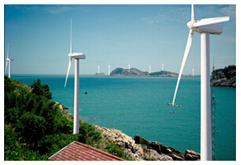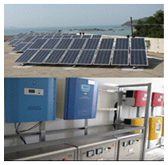Nanji Island Grid System
In the 1980's, China decided to make a fundamental shift in technology development. This shift has allowed China to focus their research efforts into creating technology that benefits countries worldwide. Part of this has been to increase the ability for companies in China to provide green energy solutions for consumers.
One of the most prestigious representations of this endeavor is the creation of the Nanji Island Megawatt Micro Grid. Part of a National Nature Reserve dedicated in 1990, the Nanji Archipelago was an ideal location to test environmentally friendly energy alternatives. To maintain the archipelago's natural eco-systems, a single island was chosen to be converted from traditional energy sources to sustainable ones. On September 24th, 2014, the transformation to renewable energy power was completed and the micro grid became the sole source of energy for Nanji Island.
Residents of this island have had their vehicles replaced with EV automotives so they no longer contribute to the rise of greenhouse gases or the need for fossil fuels. Homes and businesses on the island are now powered through a multi-step power creation and conservation system. The result is the establishment of a human eco-system without a lasting carbon footprint thus illustrating the potential of green energy to all nations.
CALB and other major alternative energy companies in China cooperated in the creation of the Nanji Island Megawatt Micro Grid. Utilizing technology to harness energy from wind, water and solar sources, the micro grid is able to store the energy for redistribution to the island's residents and businesses. CALB's renewable power storage station on Nanji Island is the largest self-contained grid of its kind in China and aims to provide continuous and efficient energy conversion.
The micro grid created by CALB for Nanji Island consists of 18,000 60Ah batteries which store the electrical energy created on site. The first phase of the grid consisted of being able to store and distribute 2.3MWh with a second phase of 3MWh for a total of 5.3MWh.
This impressive feat of technology application is a result of the cooperation of many companies to illustrate the possibilities for sustainable economies in the twenty-first century.


